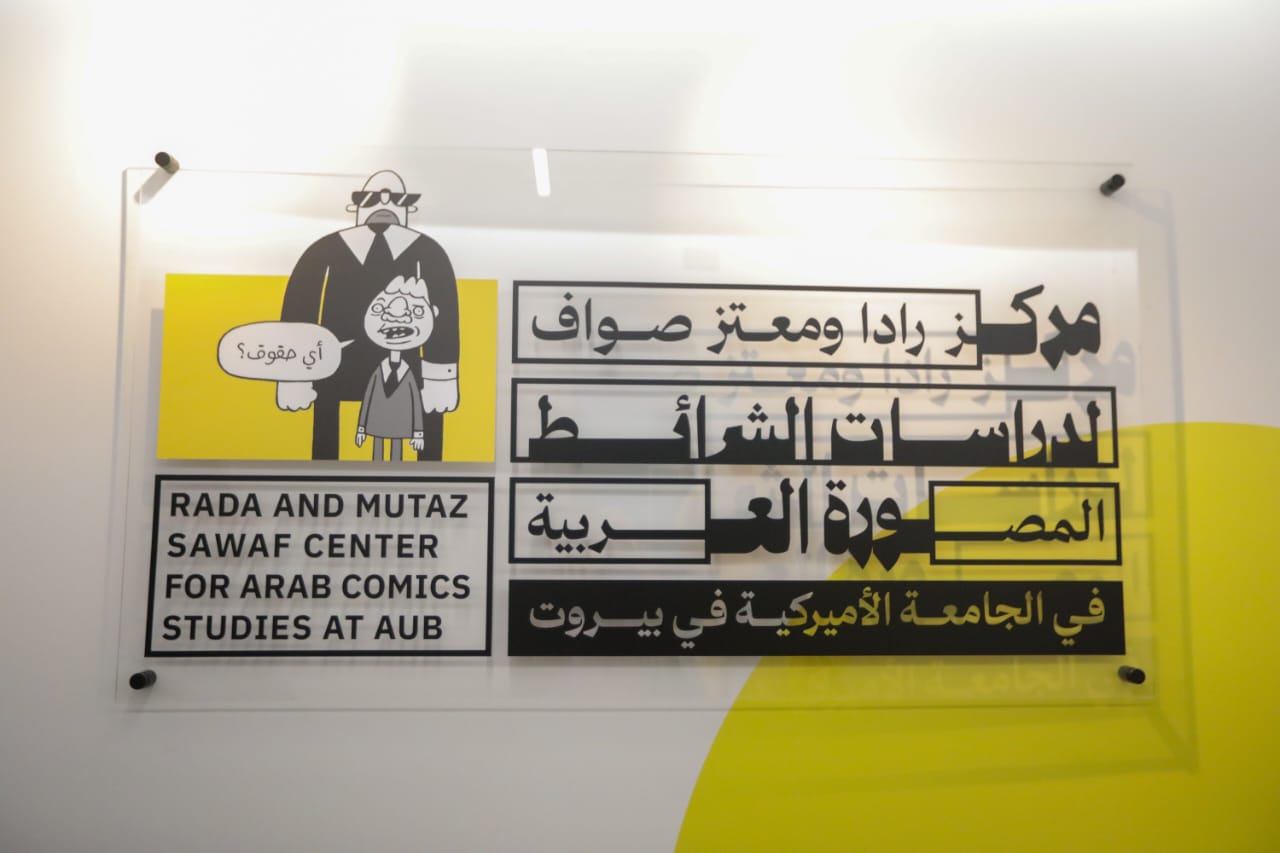Preserving Heritage Through Graphic Art: The Rada and Mutaz Sawaf Center for Arab Comics Studies
Al Yamamiya, a dark-skinned enslaved woman, one of the most clever and elegant poets of her day, stands among men and recites her verses. Some say that her mother, also enslaved, died in childbirth after being impregnated by her enslaver, others that her enslaver is the one who raised her. Regardless, she remains enslaved, sold to Imam al-Mutawakkil, and lives in his court. “Are you a poet?” the courtiers mockingly ask her. “That’s what the traders have said about me,” she replies. “Well, let’s hear you.”
So goes the second story of the graphic novel She Spoke and She Said: Every Abbasid Woman Has Her Story, by artist Lena Merhej, based on a 13th century anthology written by Ibn al-Sa’i, but which switches the focus from the male narrator to the female characters. Merhej was invited by the Rada and Mutaz Sawaf Center for Arab Comics Studies as a part of their guest lecturer series to discuss the book and her collaboration with Professor Enass Khansa from AUB’s Department of Arabic and Near Eastern Languages.
It is the preservation, promotion, and study of these kinds of original, poignant, meaningful graphic novels, comic books, and illustrations that is the purview of the center, encompassing both contemporary and archival works from the past. “There is a novelty and an immediacy to this genre. It’s visceral,” says Lina Ghaibeh, professor and founding director of the center. “When we host exhibitions outside the Middle East, people are absolutely stunned,” as if they’re seeing the region as fully alive for the first time. This is the only center in the world dedicated to Arab comics and one of only a handful dedicated to the study of comics.
In addition to exhibitions, the archive, and publishing works on comics, the center hosts courses, workshops, and masterclasses, as well as an annual symposium. In one recent masterclass taught by Mehdi Annassi, cofounder of Moroccan comics magazine Skefkef, Annassi traced his artistic journey from primitive pixel art to more complex digital art to posters, comics, and murals, exploring at each artistic juncture how the medium helps convey the message.
The first publication with the center’s imprint came out this year as part of the Graphic Narratives series published with AUB Press; If Shehrazad Drew: Critical Writings on Arab Comics, a play on words referring to the reimaging of the famous One Thousand and One Nights as graphic art, featuring critical writings on Arab comics by artist and critic George Khoury (JAD).
One of the center’s premier annual events is the Mahmoud Kahil Awards, which is the top award for comics, cartoons, and illustrations in the Arab world. The 2023 edition featured work from 18 Arab countries and included an exhibition at the Lebanese National Library and a publication with selected works from the artists.
What began in 2014 as the Mutaz and Rada Sawaf Arab Comics Initiative is now a full center dedicated to research, teach, and promote Arab comics. The center was inaugurated in 2023 thanks to a generous trust established by alumnus Mutaz Sawaf (BArch ’74) and his wife Rada. “We’re the only library in the world with a collection dedicated to Arab comics and illustration,” Ghaibeh says. “Hopefully, we’ll continue to build on it because it is important to preserve this heritage and create a rich archive for any academic research on comics from the region, something we are pioneering here at AUB.”
Source


